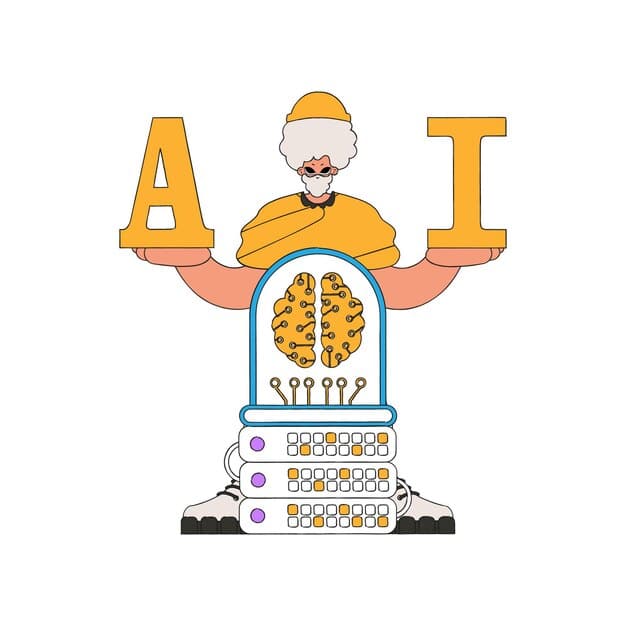AI Translation Tools: A Complete Guide for US Global Communication

AI-powered translation tools are transforming global communication for businesses in the US, offering faster, more accurate, and cost-effective solutions to overcome language barriers.
In today’s interconnected world, effective communication is paramount for businesses looking to expand their reach. AI-powered translation tools are rapidly changing the landscape of global communication in the US, offering unprecedented opportunities to connect with diverse audiences. This guide provides a comprehensive overview of how these tools can revolutionize your communication strategy.
Understanding the Rise of AI in Translation
The integration of artificial intelligence into translation technologies has marked a significant leap forward from traditional methods. AI-powered translation goes beyond simple word-for-word conversion, aiming to understand the context, nuances, and cultural subtleties of language.
The Evolution of Translation Technology
From rudimentary machine translation to sophisticated AI algorithms, the journey of translation technology has been remarkable. Early systems relied on basic dictionaries and grammatical rules, often resulting in inaccurate and clunky translations.
Key Advantages of AI Translation
AI translation offers numerous advantages over traditional methods, including speed, cost-effectiveness, and scalability. These tools can process large volumes of text quickly and accurately, making them ideal for businesses with global operations.
- Speed and Efficiency: AI can translate documents and conversations in real-time.
- Cost Reduction: Eliminates the need for expensive human translators for routine tasks.
- Scalability: Easily handles large volumes of translation requests.
- Consistency: Ensures uniform terminology and style across all translations.
AI’s ability to learn and adapt from vast datasets allows it to continuously improve its accuracy and fluency, making it an indispensable tool for modern global communication. This transformative technology enables seamless interactions across languages, fostering stronger international relationships and business opportunities.

Top AI Translation Tools for US Businesses
Choosing the right AI translation tool is crucial for businesses in the US aiming to effectively communicate on a global scale. Several tools offer unique features and capabilities, catering to a range of needs and industries.
Google Translate: A Ubiquitous Option
Google Translate is perhaps the most widely recognized AI translation tool, offering free translation services for a multitude of languages. Its accessibility and ease of use make it a popular choice for quick translations and personal use.
DeepL Translator: Precision and Nuance
DeepL Translator is renowned for its accuracy and ability to capture the nuances of language. It excels in providing contextually relevant translations, making it a preferred choice for professional applications.
Microsoft Translator: Integration and Versatility
Microsoft Translator integrates seamlessly with various Microsoft products, such as Office and Skype. This makes it a versatile option for businesses that rely heavily on the Microsoft ecosystem.
- Google Translate: Best for quick, free translations.
- DeepL Translator: Superior accuracy and contextual understanding.
- Microsoft Translator: Ideal for Microsoft ecosystem users.
Each of these tools brings unique strengths to the table. Google Translate offers convenience and broad language support, DeepL Translator focuses on accuracy and nuance, and Microsoft Translator provides tight integration with popular business applications. The best choice depends on the specific needs and priorities of the US business.
Implementing AI Translation in Your Communication Strategy
Integrating AI translation tools into your communication strategy requires careful planning and execution. It’s not just about plugging in a tool; it’s about strategically leveraging its capabilities to enhance your global outreach.
Assessing Your Translation Needs
Before implementing any AI translation tool, take a step back and evaluate your specific translation needs. Consider the types of content you’ll be translating, the languages you need to support, and the level of accuracy required.
Training Your Team
Even with AI, human oversight is essential. Train your team to effectively use the AI translation tools and to review and refine the translated content. This ensures that the translations are accurate and aligned with your brand’s voice.
Choosing the Right Tools
Select AI translation tools that align with your specific needs and budget. Some tools are better suited for technical documents, while others excel in marketing materials. Choose wisely to maximize the effectiveness of your translation efforts.
By assessing your translation needs, training your team, and carefully selecting the right tools, you can seamlessly integrate AI translation into your communication strategy. This approach will not only enhance your global reach but also ensure that your message resonates effectively with diverse audiences.
Overcoming Challenges in AI-Powered Translation
While AI translation tools offer numerous benefits, they also present certain challenges. Understanding these challenges and knowing how to address them is crucial for successful global communication.
Addressing Cultural Nuances
One of the main challenges is the accurate translation of cultural nuances and idioms. AI may struggle with expressions that are specific to a particular culture or region.
Maintaining Brand Voice
Ensuring that your brand voice is consistent across languages can be difficult with AI translation. It’s essential to review and adjust the translated content to maintain your brand’s unique identity.
Data Security and Privacy
When using AI translation tools, it’s important to consider data security and privacy, especially when dealing with sensitive information.
Addressing these challenges requires a combination of technological solutions and human expertise. By staying vigilant and proactive, businesses can harness the power of AI translation while maintaining accuracy, cultural sensitivity, and data security. This approach ensures that global communication is not only efficient but also effective and responsible.

Best Practices for Using AI Translation Tools
To maximize the effectiveness of AI translation tools, it’s essential to follow certain best practices. These guidelines can help ensure that your translations are accurate, culturally appropriate, and aligned with your communication goals.
Start with High-Quality Source Content
The quality of the original text significantly impacts the accuracy of the translation. Ensure that your source content is clear, concise, and free of grammatical errors.
Use a Professional Translator
While AI can handle much of the translation work, it pays to have a professional translator on hand to review and refine translations that are particularly important. This can help ensure accuracy, cultural sensitivity, and brand consistency.
Provide Context
To improve the accuracy of AI translations, it’s helpful to provide context. This can include information about the target audience, the purpose of the translation, and any specific terminology or style guidelines to adhere to.
Regular Updates and Training
AI translation tools are constantly evolving, so it’s important to keep up with the latest updates and features to take full advantage of their capabilities. Provide your team with regular training on how to use the tools effectively. By starting with high-quality source content, involving professional translators, providing context, and offering regular updates and training, businesses can ensure that their AI translation efforts are effective, accurate, and aligned with their global communication goals.
Future Trends in AI Translation
The field of AI translation is rapidly evolving, with new innovations and advancements emerging regularly. Staying informed about these future trends is crucial for businesses looking to leverage the full potential of AI in their global communication strategies.
Advancements in Neural Machine Translation
Neural Machine Translation (NMT) is at the forefront of AI translation technology. Future advancements in NMT are expected to further improve the accuracy and fluency of translations.
Real-Time Translation
Real-time translation is becoming increasingly sophisticated, enabling seamless communication across languages. This technology is particularly useful for international meetings, webinars, and customer service interactions.
- Neural Machine Translation (NMT): Improving accuracy and fluency.
- Real-Time Translation: Enabling seamless communication.
The future of AI translation holds immense promise for businesses looking to break down language barriers and connect with global audiences. Embracing these advancements will be key to unlocking new opportunities and achieving success in the global marketplace. By staying informed, businesses can leverage the full potential of AI to communicate more effectively and efficiently across languages, fostering stronger international relationships and business opportunities.
| Key Point | Brief Description |
|---|---|
| 🌐 AI Translation | Transforms global communication for US businesses. |
| ⚙️ Implementation Strategy | Assess needs, train teams, and select appropriate tools. |
| 🎯 Best Practices | Use high-quality source content and provide context. |
| 🚀 Future Trends | Advancements in NMT and real-time translation. |
Frequently Asked Questions (FAQ)
▼
AI translation tools provide faster, more accurate, and cost-effective translations compared to traditional methods, enabling businesses to communicate effectively with global audiences. They also offer scalability and consistency in translations.
▼
Businesses should start by assessing their translation needs, training their teams to use the tools effectively, and choosing AI translation tools that align with their specific business goals and budget.
▼
Common challenges include accurately translating cultural nuances and maintaining brand voice. These can be addressed by using high-quality source content, providing context, and involving professional translators in the review process.
▼
To ensure accuracy and cultural appropriateness, use clear and concise source content. Always consider the cultural context and specific terminology. Regularly update AI translation tools to stay informed of advancements.
▼
US businesses can anticipate advancements in Neural Machine Translation (NMT) and real-time translation capabilities. These trends will enable more accurate translations, which would improve global communication in international meetings and customer service.
Conclusion
AI-powered translation tools are revolutionizing global communication for US businesses, offering unprecedented opportunities to connect with diverse audiences. By understanding the benefits, challenges, and best practices associated with these tools, businesses can effectively leverage AI to expand their global reach and achieve success in the international marketplace.





